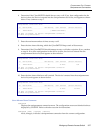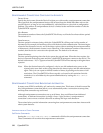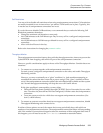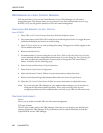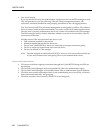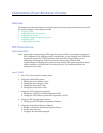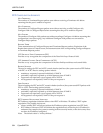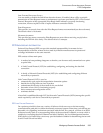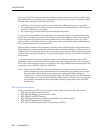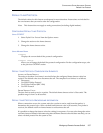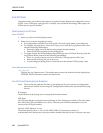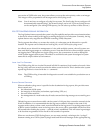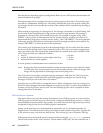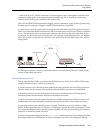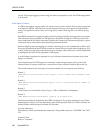
Workgroup Remote Access Switch 335
C
ONFIGURING
O
THER
A
DVANCED
O
PTIONS
PPP Configuration
LINK FAILURE DETECTION STATUS
You can enable or disable the link failure detection feature. If enabled, there will be a periodic
transmission of Echo-Request frames, a maintenance type frame provided by PPP’s Link Control
Protocol. Reception of the appropriate Echo-Reply frame indicates a properly functioning
connection; incorrect replies or lack of replies indicate a connection failure.
E
CHO FREQUENCY
This specifies, in seconds, how often the Echo-Request frames are transmitted (see above element).
The default value is 10 seconds.
M
AXIMUM ATTEMPTS
This specifies how many consecutive Echo-Requests are sent without receiving a reply before
declaring the PPP link to be faulty. The default value is 3 attempts.
PPP BACKGROUND INFORMATION
Point-to-Point Protocol (PPP) can provide standard interoperability for remote devices.
Interoperability will allow remote devices made by different manufacturers to operate and
exchange information on the same network.
PPP consists of three main parts:
1. A method of encapsulating datagrams so that they can be more easily transmitted over point-
to-point links.
2. A Link Control Protocol (LCP) for establishing, configuring, and testing the data-link
connection.
3. A family of Network Control Protocols (NCPs) for establishing and configuring different
network-layer protocols.
Link Control Protocol (LCP) is used to:
• automatically agree upon the encapsulation formation options
• handle the varying limits on sizes of packets
• authenticate the identity of the remote device on the link
• determine when a link is functioning properly
• detect common misconfiguration errors
• terminate the link
After a link is established through LCP, the Network Control Protocols (NCPs) manage the specific
needs required by each device’s network-layer protocol.
PPP L
INK FAILURE DETECTION
On a point-to-point link, there are a variety of failures which can occur on the intervening
communications path and/or within the remotely connected system. Often times, such failures are
detectable via a signalling mechanism associated with the link. For example, a failure of an ISDN
B-channel usually leads to a corresponding failure of the associated D-channel, an event which is
suitable for concluding that the B-channel has failed. Similarly, the Local Management Interface
(LMI) facility of a Frame Relay circuit may provide feedback suitable for determining that an end-
to-end Virtual Circuit has failed.



